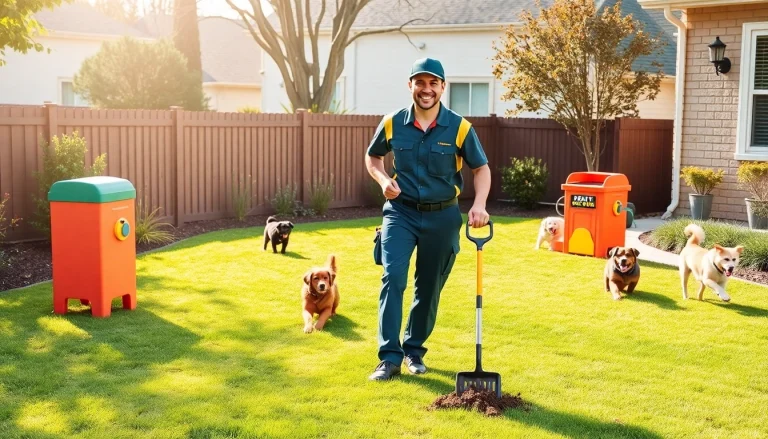
Understanding Service Dogs
What Are Service Dogs?
Service dogs are highly trained canines that assist individuals with various disabilities by performing specific tasks to mitigate their owner’s challenges. According to the Americans with Disabilities Act (ADA), a service dog is defined as a dog that has been individually trained to do work or perform tasks for a person with a disability. This work must be directly related to the person’s disability. Common examples of service dogs include those that provide mobility assistance, guide people who are blind or visually impaired, alert individuals with hearing impairments, and assist those with psychiatric conditions.
Types of Service Dogs Available
There are several types of service dogs, each trained to meet specific needs. The most common types include:
- Guide Dogs: These dogs help individuals who are blind or visually impaired navigate their environment safely.
- Mobility Assistance Dogs: Trained to assist those with physical disabilities, these dogs can help with balance, retrieve items, and open doors.
- Hearing Dogs: These dogs alert individuals with hearing loss to important sounds, such as alarms or knocks at the door.
- Medical Alert Dogs: Trained to alert their owners to medical issues, such as diabetic episodes or seizures.
- Psychiatric Service Dogs: Specifically trained to assist individuals with mental health conditions, including PTSD, anxiety, and depression, by performing tasks that help mitigate symptoms.
Differences Between Service Dogs, Therapy Dogs, and Emotional Support Dogs
While service dogs, therapy dogs, and emotional support animals (ESAs) are all valuable in providing support, they serve different purposes and are trained differently:
- Service Dogs: As previously mentioned, service dogs are specifically trained to perform tasks for individuals with disabilities and are granted public access rights under the ADA.
- Therapy Dogs: These dogs are trained to provide comfort and affection in settings such as hospitals or schools. They do not have the same public access rights as service dogs.
- Emotional Support Dogs: While they provide emotional support, they are not trained to perform specific tasks to assist the owner with a disability and do not have the same access rights as service dogs.
The Process of Acquiring Service Dogs for Sale
How to Evaluate Your Needs for a Service Dog
Before acquiring a service dog, it is essential to evaluate your needs. Here are steps to consider:
- Consult with Healthcare Professionals: Collaborate with medical professionals or therapists to determine if a service dog is appropriate for your situation.
- Identify Specific Tasks: Outline the tasks you would need the dog to perform. This could include alerting you to medical issues, providing mobility assistance, or serving as emotional support.
- Assess Your Lifestyle: Consider your lifestyle and environment, including space for the dog, time for training and care, and ability to manage the dog’s needs.
Where to Find Service Dogs for Sale
Once you have assessed your needs, the next step is to find suitable service dogs for sale. There are several ways to locate a service dog:
- Reputable Organizations: Look for organizations that specialize in training service dogs. These organizations often have websites that provide information about available dogs.
- Local Breeders: Some breeders focus on producing dogs suitable for service work. Ensure they have a good reputation and provide evidence of training.
- Rescue Groups: Some rescue organizations focus on dogs that can be trained as service animals. These dogs often provide a worthy option for those seeking a companion.
What to Expect During the Purchase Process
The process of purchasing a service dog typically involves several steps:
- Application: Complete an application with the service dog organization to indicate your needs and medical requirements.
- Interview: Expect an interview process, where staff may discuss your needs in-depth and assess your suitability for a service dog.
- Matching: The organization will help match you with a dog that fits your lifestyle, personality, and needs.
- Training: Many organizations provide training for both the handler and the dog, ensuring a successful partnership.
- Follow-Up: After the placement, organizations usually have follow-up programs to ensure ongoing success and relationship building between you and your new service dog.
Training and Certification Standards
Required Training for Service Dogs
Service dogs undergo extensive training to qualify for certification. The basic training regimen typically includes:
- Basic obedience commands (sit, stay, come).
- Socialization skills, ensuring the dog is comfortable in public settings.
- Specific task training based on the handler’s needs, such as retrieval or alerting.
- Behavioral training to ensure the dog can handle the unusual stimuli in public without distraction or stress.
Certification and Legal Requirements
While there is no formal certification requirement under federal law, many states and organizations now begin to establish standards to ensure the quality of service dogs. The key points include:
- Documentation may be necessary to prove that the dog is trained and serves a legitimate function for someone with a disability.
- Terms of accessibility to public spaces can also be subject to state regulations, so it may vary by location.
- Admission to service dog programs often requires applicants to provide evidence of their disabilities from a certified healthcare provider.
Finding Accredited Providers
When looking for accredited service dog providers to ensure quality training, consider:
- Organizations that are certified by the Assistance Dogs International (ADI) or the International Association of Assistance Dog Partners (IAADP).
- Reviews and testimonials from previous clients.
- Transparency in their training process and a commitment to ethical breeding and training practices.
Benefits of Having a Service Dog
Emotional and Physical Support Provided
Service dogs offer significant emotional and physical benefits to individuals with disabilities:
- Emotional Support: Service dogs can alleviate feelings of anxiety, depression, and loneliness, providing a constant source of companionship.
- Physical Assistance: Tasks such as retrieving items, providing balance support, and alerting to medical issues can significantly enhance independence and safety.
Enhancing Independence and Quality of Life
Service dogs can dramatically improve the quality of life for their handlers by promoting independence:
- By completing tasks that the handler may find challenging due to their disability, service dogs empower owners to lead more independent lives.
- The presence of a service dog encourages social interaction, reducing stigma and disconnect often felt by individuals with disabilities.
Potential Challenges and Solutions
While the benefits of having a service dog are numerous, some challenges may arise:
- Public Attitudes: Not everyone is educated about service dogs, potentially leading to misunderstandings. Educating others about service dog etiquette can mitigate this issue.
- Training Needs: Continued training is essential to reinforce obedience and task performance. Enrolling in follow-up training programs can ensure the dog remains effective.
- Healthcare Access: Most public establishments must allow service dogs; however, individuals may face difficulties. Knowing your rights can help manage these situations better.
Ongoing Care and Maintenance
Daily Care Needs for Service Dogs
Owning a service dog entails daily responsibilities similar to those for any pet but with some additional considerations:
- Exercise: Regular physical activity is essential to maintain the dog’s health and energy.
- Nutrition: Providing a balanced diet will ensure longevity and vitality.
- Grooming: Regular grooming and hygiene practices are vital to maintain a healthy and presentable dog.
Regular Training and Updates
Ongoing training and updates on skillsets are crucial for sustaining the efficacy of service dogs:
- Regular refreshers in obedience and task training help to reinforce learned behaviors.
- Engagement in new training exercises can prevent boredom and enhance the dog’s mental stimulation.
Insurance and Financial Considerations
When acquiring a service dog, consider the financial responsibilities involved:
- Initial Costs: Service dogs can entail significant upfront costs, including purchasing and training expenses.
- Ongoing Expenses: Budget for food, veterinary care, grooming, and training sessions.
- Financial Assistance: Some organizations provide scholarships or grants to assist with the costs associated with acquiring a service dog.






